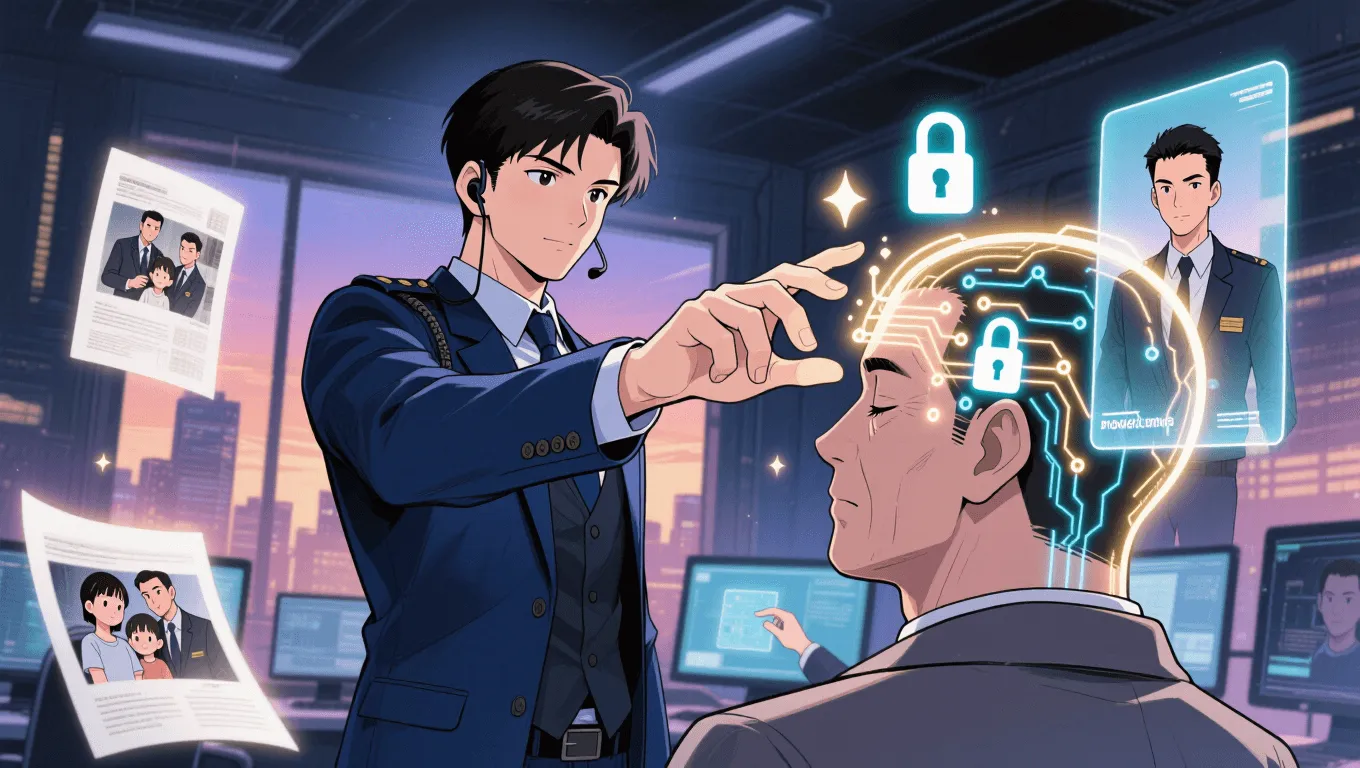Memory Manipulation

Memory Manipulation Video Demo 🎬
Table of Contents
- Memory Manipulation Video Demo 🎬
- What Is Memory Manipulation
- Core Abilities of Memory Manipulation
- Application / Tactical Advantages in Combat
- Level: Level 1 🏙️, Level 2 🌇, Level 3 🌃
- Limitations of Using the Memory Manipulation
- Weakness Against What Other Superpowers
- Synergistic Power Combos
- Known Users
Memory manipulation is the superpower to read, edit, erase, implant, or restore memories with precision. In simple terms, it is memory editing at will: the user can perform amnesia induction, false memory implantation, and cognitive rewriting to change what someone believes happened. This guide breaks down what memory manipulation is, how it works in combat, its power levels, limits, counters, and famous examples. For more powers, browse the superpower wiki and try your luck with the random superpower generator on the homepage.
What Is Memory Manipulation
Memory manipulation centers on the mind’s storehouse of experiences. Unlike mind control, which forces actions in the present, this ability changes the data a person relies on to make choices. The result is a quiet but powerful influence: swap a password, blur a face, or remove an entire relationship. Typical portrayals describe it as interfacing with engrams (the brain’s memory traces), tagging moments by time, place, or emotion, and then performing targeted edits.
Writers often divide the power into four basic operations:
-
Access (reading memories like a timeline),
-
Removal (erasing specific recollections—“mind wipe”),
-
Insertion (implanting convincing new experiences), and
-
Repair (restoring or stabilizing damaged memories).
Because memories shape identity, consent and ethics are core concerns. Stories featuring this power frequently explore trust, accountability, and what makes a person who they are.
Core Abilities of Memory Manipulation
Memory reading and indexing
The user scans a subject’s mental timeline, bookmarking events by date, people involved, and emotional intensity. This “index” enables surgical targeting: the exact five minutes when a code was seen, the first time an enemy met an ally, or the location of a hidden cache.
Selective erasure (targeted amnesia)
The user deletes chosen memories without harming surrounding knowledge. They might remove the memory of a heist’s route but leave a driver’s road skills intact. In softer versions, the memory is not destroyed but quarantined—out of reach under normal cues.
False memory implantation
Convincing, sensory-rich scenes are written into the mind: a fake briefing, a forged friendship, a memory of “finding” a decoy device. The more detail and emotional resonance added, the more the memory passes truth checks.
Memory masking and suppression
Instead of deleting, the user hides memories behind new triggers. The target can only access them after a specific prompt, phrase, or location, making secrets safe until needed.
Memory restoration and healing
Damaged or repressed recollections are reconstructed. This has therapeutic uses—resolving trauma by reframing and stabilizing it—along with investigative value when witnesses recall details they thought were gone.
Skill playback (limited mnemonic transfer)
Some settings allow copying procedural memories—languages, lockpicking, or stances—though these “downloads” may be temporary or incomplete without muscle practice.
Multi-subject synchronization
Advanced users align or desynchronize group memories—great for creating airtight alibis or sowing doubt inside a squad.
Application / Tactical Advantages in Combat
Silent intel extraction
Reading recent memories yields routes, codenames, safehouse layouts, and radio protocols—without physical evidence or noisy interrogation.
Denial of knowledge
Erase knowledge of a hero’s weakness, the location of allies, or the identity of a double agent. An entire op can be protected by removing one remembered doorway.
Controlled deception
Implant a false rendezvous time or misremembered uniform markings. Enemies show up late, target the wrong team, or challenge their own chain of command.
De-skill a specialist
Suppress the motor memory of a marksman’s breathing cycle or the reflexes of a martial artist. The fighter remains strong but loses timing and form at the worst moment.
Clean exit and cover
After a rescue or infiltration, wipe witnesses’ recollection of faces, voices, and escape routes. Combine with a subtle “you never saw anything” cue to avoid alarms.
Crowd pacification (high-level)
In a riot or ambush, dampen the last minute of escalating tension or overwrite it with a memory of dispersal. The scene de-escalates without visible force.
Level: Level 1 🏙️, Level 2 🌇, Level 3 🌃
Level 1 🏙️ — Surface edits & short-term access

-
Scope: Minutes to hours of short-term memory; one target at a time.
-
Feats: Read a password glimpse, blur a face from a chase, remove a single conversation.
-
Limits: Requires close range and focus; complex fabrications often crumble under scrutiny.
-
Typical users: Spies, thieves, field medics doing light amnesia to reduce shock.
Level 2 🌇 — Deep edits & durable fabrications

-
Scope: Long-term memory blocks; multi-sensory implants with emotional tone.
-
Feats: Replace a mission briefing, craft a fake backstory, lock a secret behind a passphrase.
-
Limits: High energy cost; inconsistencies with outside evidence can crack the edit.
-
Typical users: Agency handlers, counterintelligence officers, therapists addressing trauma with careful restoration.
Level 3 🌃 — Mass rewriting & identity remodeling

-
Scope: Crowd-scale edits, life-arc rewrites, and synchronization of group narratives.
-
Feats: Erase a city’s memory of an event, overwrite a villain’s formative trauma, or create a false “public history.”
-
Limits: Severe mental strain; risk of backlash (psychic whiplash, identity fracture), and enormous ethical fallout.
-
Typical users: Myth-level telepaths, reality-adjacent psionics.
Limitations of Using the Memory Manipulation
Cognitive resistance and training
Targets with meditation practice, disciplined attention, or psychic shielding resist edits. Some brains hold redundancy—memories reassemble from habits, diaries, or muscle memory.
Evidence and cross-checks
External records (video, logs, magical wards) expose contradictions. The more people share an event, the harder it is to falsify for all of them.
Detail burden
Rich, believable implants require consistent sensory cues, timeline alignment, and social echoes. Missing details create “grit” that attentive targets notice.
Emotional inertia
Highly charged memories—love, grief, shame—bind tightly to identity. Editing them can cause migraines, dissociation, or sudden rebound recall.
Range, duration, and fatigue
Deep edits take time and leave the user cognitively taxed. Long sessions invite interruptions and countermeasures.
Impermanence and drift
Some settings treat edits as overlay layers. Stress, therapy, or trigger phrases may peel them back over weeks or years.
Consent and law
Civilizations often criminalize non-consensual edits. Even heroic use (e.g., trauma reduction) may demand documented consent and oversight.
Weakness Against What Other Superpowers
-
Telepathic shielding / mental encryption: Dedicated telepaths install locks and decoys; attempted edits trip alarms or rebound on the attacker.
-
Truth detection and lie-bound artifacts: Truth auras, veritas fields, or enchanted items enforce event consistency, causing false memories to fail in their presence.
-
Precognition / retrocognitive checks: Seers compare true past snapshots against edited minds, spotting divergence instantly.
-
**Reality warping and time control:**When objective events are rewritten or time is looped, mismatched memories destabilize or collapse.
-
Technopathy / data sanctuaries: Immutable logs, quantum backups, and timestamped feeds outvote personal recollection in court and in public trust.
-
Emotional amplification: Empaths who spike core feelings can force suppressed memories back to the surface, shattering masks.
Synergistic Power Combos
-
Illusion + Memory Manipulation
Stage a convincing scene (illusion) and then encode it as the remembered truth (implantation). The present sells the past.
- Telepathy + Memory Indexing
Telepathy locates the exact engram; memory manipulation edits it with minimal collateral damage—fast, quiet, reliable.
- Probability Manipulation + Cover Stories
Nudge coincidences so physical evidence matches the new memory—receipts, traffic cams, and timing all align.
- Stealth / Infiltration + Mind Wipe
After the mission, remove identifying details from every witness along the route. The op becomes a ghost story.
- Empathy + Memory Healing
Pair emotional regulation with restoration to process trauma safely, keeping identity coherence intact.
- Technopathy + Backup Recall
Store encrypted memory snapshots in off-brain media. If edits occur, reload the verified state or diff the changes.
Known Users
Writers have given this ability to heroes, antiheroes, and villains alike. Notable examples include:
-
Professor Charles Xavier—has suppressed or restored memories at key points in mutant history (see the character overview at https://en.wikipedia.org/wiki/Professor_X).
-
Zatanna Zatara—certain storylines depict ethically charged memory alterations among allies and foes (https://en.wikipedia.org/wiki/Zatanna).
-
Martian Manhunter—telepathic prowess often extends to memory reading and careful editing (https://en.wikipedia.org/wiki/Martian_Manhunter).
These characters show the full spectrum—from surgical edits to mass-scale narrative changes—and the ethical debates that follow.
For more entries and related abilities, explore the superpower wiki, and if inspiration is needed for your next character build, try the random superpower generator.
